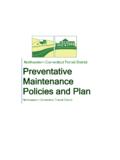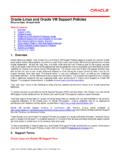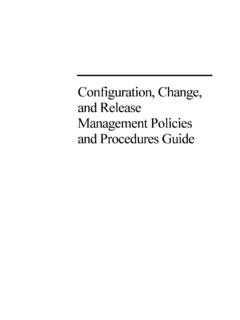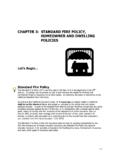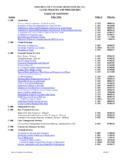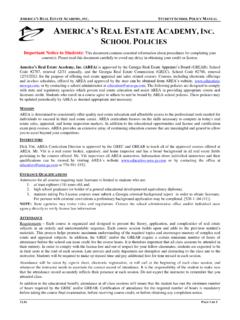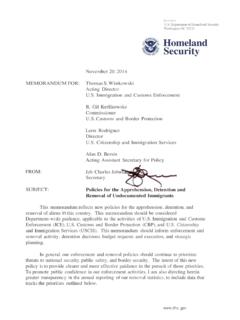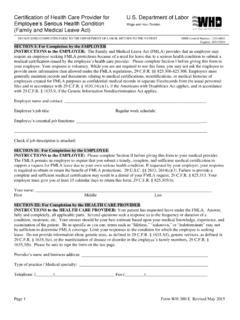Transcription of Report on Smoke-Free Policies in Australia
1 World Health OrganizationKerryn Riseley1 Senior Policy OfficerAlcohol, Tobacco and Koori Drug Policy UnitDepartment of Human Services, VictoriaReport on Smoke-Free Policies in Australia1 The views expressed in this Report are those of the author and do represent those of the Victorian Department of Human Services2 World Health Organization Tobacco free Initiative Headquarters would like to thank the Regional Offices for their contribution to this Regional Office for Africa (AFRO)Cite du DjoueBo te postale 6 Brazzaville Congo Telephone: +(1-321) 95 39 100/+242 839100 WHO Regional Office for the Americas / Pan American Health Organization (AMRO/PAHO) 525, 23rd Street, , DC : +1 (202) 974-3000 WHO Regional Office for the Eastern Mediterranean (EMRO) WHO Post OfficeAbdul Razzak Al Sanhouri Street, (opposite Children s Library)Nasr City, Cairo 11371 EgyptTelephone: +202 670 2535 WHO Regional Office for Europe (EURO) 8, ScherfigsvejDK-2100 CopenhagenDenmarkTelephone: +(45) 39 17 17 17 WHO Regional Office for South-East Asia (SEARO) World Health House, Indraprastha EstateMahatma Gandhi RoadNew Delhi 110002 IndiaTelephone: +(91) 11 337 0804 or 11 337 8805 WHO Regional Office for the Western Pacific (WPRO) Box 29321000 ManilaPhilippinesTelephone: (00632) 3 Report on Smoke-Free Policies in Australia2 World Health Organization Tobacco free Initiative Headquarters would like to thank the Regional Offices for their contribution to this Regional Office for Africa (AFRO)Cite du DjoueBo te postale 6 Brazzaville Congo Telephone: +(1-321) 95 39 100/+242 839100 WHO Regional Office for the Americas / Pan American Health Organization (AMRO/PAHO) 525, 23rd Street, , DC.
2 +1 (202) 974-3000 WHO Regional Office for the Eastern Mediterranean (EMRO) WHO Post OfficeAbdul Razzak Al Sanhouri Street, (opposite Children s Library)Nasr City, Cairo 11371 EgyptTelephone: +202 670 2535 WHO Regional Office for Europe (EURO) 8, ScherfigsvejDK-2100 CopenhagenDenmarkTelephone: +(45) 39 17 17 17 WHO Regional Office for South-East Asia (SEARO) World Health House, Indraprastha EstateMahatma Gandhi RoadNew Delhi 110002 IndiaTelephone: +(91) 11 337 0804 or 11 337 8805 WHO Regional Office for the Western Pacific (WPRO) Box 29321000 ManilaPhilippinesTelephone: (00632) 3 Report on Smoke-Free Policies in AustraliaIntroductionTobacco use is the leading cause of death and disease in Australia . Each year nearly 20 000 Australians die and more than 150 000 are hospitalized due to tobacco-related illnesses (1). The economic and social costs of tobacco use in Australia are estimated at $AU 12, million per annum (2).
3 In 2001, approximately 22% of Australian adults were smokers (3). Australian males ( ) are more likely to smoke than Australian females ( ), with adult smok-ing rates peaking in the 20 29-year age group (4). Young Australians are still taking up smoking at a disconcerting rate, with 260 000 students aged 12 17 estimated to be smokers (5). Around one-third of 17-year-old students smoke . Smoking rates are significantly higher in some disadvan-taged groups in the Australian community. People from lower socioeconomic brackets, people with mental illnesses and some ethnic communities such as Greek, Vietnamese and Eastern Mediterranean, all have substantially higher smoking rates than the general population (6,7,8). Of particular concern is the smoking rate among indigenous Australians, which is over double the rate of the over-all Australian population: 53% of indigenous males and of indigenous females are smokers (9). While smoking prevalence in the general Australian population is declining, there have not been corresponding decreases in smoking prevalence in these high-risk groups.
4 Smoke-Free Policies in AustraliaSelf regulationAs evidence has grown of the harmful impact of exposure to environmental tobacco smoke (ETS), Smoke-Free envi-ronments have become increasingly common in Australia . Prior to introducing Smoke-Free legislation throughout Australia s six states and two territories, self regulation was the predominant means of regulating ETS exposure in workplaces and public places, with employers and venue operators voluntarily implementing smoking restrictions at premises within their control. In some areas, self-regulation has been highly successful. For example, a Smoke-Free work environment policy was adopted throughout the Australian Public Service in 1988. This ban was the first of its type in Australia and similar Policies were subsequently introduced in public services across the country. The smoking ban in government buildings enjoys a high compliance rate, and a Smoke-Free work environment is now an expected condition of employment with the Government and, indeed, in many other professional settings.
5 However, smoking restrictions imposed by individual employers and venue operators have failed to protect staff and patrons in many enclosed environments, such as res-taurants, pubs and casinos. A study conducted seven years prior to the introduction of Smoke-Free dining laws in New South Wales found that not only did restaurateurs under-estimate patron demand for Smoke-Free areas, even those who did perceive the need to provide Smoke-Free areas offered few such areas (10). Smoke-Free legislationThe responsibility for tobacco control in Australia rests primarily with state and territory governments. However, the federal Government has played a leadership role, tak-ing the country s first legislative step in this area by ban-ning smoking on domestic airline flights in 1987. This was followed by smoking bans in other federally controlled areas, such as on interstate buses and coaches (1988), on domestic sectors of international flights (1990) and on all Australian airlines flights anywhere in the world and on all international airlines flights within Australia (1996).
6 As evidence mounted of the significant economic and social costs of tobacco use in Australia , tobacco use was identified as a major public health issue, requiring a coordinated national response. In 1994, the development of a National Tobacco Strategy was endorsed by the nation s peak ministerial drug policy group, comprising federal, state and territory health and law enforcement ministers. The goal of the National Tobacco Strategy 1999 2003 is to improve the health of all Australians by eliminating or reducing their exposure to tobacco in all its forms. 2 Reducing exposure to ETS is a critical part of the National Tobacco Strategy. The strategy is informed by a set of guiding principles to assist states and territories in implementing best practice Smoke-Free legislation. Principal components of the guidelines are:2 Commonwealth Department of Health and Aged Care. National Tobacco Strategy 1999 to 2002-2003 A Framework for Action.
7 1999, Canberra. Note that the operation of the National Tobacco Strategy has been extended by 12 months to 2003 Health Organization 5 Report on Smoke-Free Policies in Australia non-smoking environments should be regarded as nor-mal practice in enclosed public places and workplaces; there is no right to smoke in an enclosed public place or workplace; smoking restrictions should apply equally to all premis-es within any particular industry; any exempted premises must meet health-based crite-ria for ETS; and compliance mechanisms should be based on education and community support (11).While no Australian jurisdiction has implemented smok-ing bans as comprehensive as those recommended by the guidelines, all states and territories have taken some leg-islative steps to reduce ETS exposure in public places and workplaces. South Australia and Victoria have adopted a piecemeal approach, legislating to provide limited Smoke-Free environments, such as restaurants, parts of licensed premises and, in Victoria, shopping centres and gaming and bingo legislation concerning Smoke-Free enclosed public places has been enacted in the Australian Capital Territory (ACT) (1994), Western Australia (1999), New South Wales (2000), Tasmania (2001), Queensland (2002) and the Northern Territory (2003).
8 A public place is defined in similar terms in these jurisdictions. For example, in the ACT it is defined as: a place which the public, or a section of the public, is entitled to use or which is open to, or is being used by, the public or a section of the public (whether on payment of money, by virtue of membership of a body, or otherwise). 3 Places captured by this defini-tion include enclosed restaurants, shopping centres, sport-ing facilities, libraries, universities and public transport. However, since many workplaces, such as factories are not open to the general public, and employees are not con-sidered to be a section of the public , legislative bans on smoking in enclosed public places do not prohibit smoking in all Queensland legislation prohibits smoking in enclosed places and therefore covers workplaces as well as pub-lic places. Private places like residential premises, private vehicles and non-common areas of multi-unit residential accommodation are specifically excluded from the ban.
9 Legislation in Tasmania (2001) and the Northern Territory (2003) creates Smoke-Free areas that are defined in both jurisdictions to include enclosed public places and enclosed workplaces. However, regulations in the Northern Territory permit employers to designate smoking areas. In the remaining jurisdictions, smoking in the workplace is dealt with mainly under occupational health and safety legislation. In Western Australia , occupational health and safety regulations prohibit smoking in the workplace, although there are many exemptions, such as the allow-ance of designated smoking areas. In the ACT, a Code of Practice for Smoke-Free Workplaces, which falls under occupational health and safety legislation, recommends implementing full smoking bans in workplaces. Failure to comply with the Code of Practice may be used as evi-dence in proceedings under the Territory s occupational health and safety legislation, but does not of itself consti-tute a breach of the legislation.
10 In the remaining states, employee protection from ETS relies on general obligations in occupational health and safety legislation that require employers to provide a working environment that is safe and without risks to health. 4 Attempts to use these gen-eral obligations to ensure Smoke-Free workplaces, particu-larly by workers and unions in the hospitality sector, have proven largely unsuccessful. The National Occupational Health and Safety Commission recently recommended that ETS exposure be excluded, without exception, in all Australian workplaces. However, state and territory Workplace Relations Ministers have not acted on this issue, intimating that workplace exposure to ETS should be dealt with by Health Ministers through Smoke-Free legisla-tion. With Smoke-Free workplace legislation in place in only three Australian jurisdictions, and even this legislation failing to cover all workplaces, many Australian workers remain at risk of ETS exposure.










